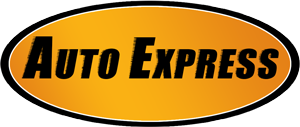Blog
Blog

29 Aug, 2024
If you're a vehicle owner in Sacramento, you're likely familiar with the term "smog test." It's a routine part of car ownership that can sometimes be a bit of a hassle. But understanding the importance of smog tests, how they work, and where to get them done can make the process much smoother. In this comprehensive guide, we'll cover everything you need to know about smog tests in Sacramento, including why they're essential, how often you need them, and tips for ensuring your vehicle passes with flying colors. What is a Smog Test? A smog test, also known as an emissions test, is a procedure that measures the amount of pollutants your vehicle emits. These pollutants include carbon monoxide, nitrogen oxides, and hydrocarbons, which contribute to air pollution and smog—a significant environmental issue in urban areas like Sacramento. The smog test is designed to ensure that vehicles meet specific emissions standards set by the state of California to reduce the impact on air quality. Why Are Smog Tests Required in Sacramento? Sacramento, like many other cities in California, has stringent air quality regulations. The region's geography, climate, and high population density contribute to the formation of smog, which can have severe health and environmental consequences. To combat this, the state of California requires most vehicles to undergo regular smog tests. These tests help identify vehicles that are polluting more than they should be, ensuring that only clean-running vehicles are on the road. Who Needs a Smog Test in Sacramento? Not all vehicles are required to get a smog test in Sacramento, but most are. Here's a breakdown of which vehicles need to be tested: Gasoline-powered vehicles: Generally, cars, trucks, and SUVs powered by gasoline that are more than eight years old and less than 30 years old must undergo a smog test every two years. Vehicles older than 1975 are exempt. Diesel-powered vehicles: Diesel vehicles from model year 1998 and newer with a gross vehicle weight rating of 14,000 pounds or less are required to get a smog test every two years. Hybrid vehicles: Hybrid cars also need a smog test every two years, just like gasoline and diesel vehicles. Electric vehicles: Fully electric vehicles are exempt from smog testing. Vehicles with a gross vehicle weight rating (GVWR) of over 14,000 pounds: These vehicles are typically exempt from smog testing. Motorcycles and trailers: These are also exempt from smog testing. If you're unsure whether your vehicle needs a smog test, you can check with the California Department of Motor Vehicles (DMV) or refer to your vehicle registration renewal notice, which will indicate if a smog test is required. How Often Do You Need a Smog Test in Sacramento? Most vehicles in Sacramento require a smog test every two years as part of the vehicle registration renewal process. If you sell your vehicle, you'll also need to get a smog test unless the car is less than four years old. In that case, the buyer will need to pay a smog transfer fee instead. Newer vehicles (within the first eight model years) are generally exempt from smog testing, except when sold. However, this exemption comes with a caveat—if your vehicle is within this range, you may still be required to pay an annual smog abatement fee. What Happens During a Smog Test? A smog test is a straightforward process that usually takes about 20-30 minutes. Here’s a step-by-step breakdown of what happens during a typical smog test in Sacramento: Visual Inspection: The technician will first conduct a visual inspection of your vehicle's emission control components to ensure everything is in place and functioning correctly. Functional Inspection: Next, the technician will perform a functional test of various emission-related components, such as the on-board diagnostic (OBD) system, which monitors your vehicle's performance. Emissions Test: The main part of the smog test involves measuring the levels of pollutants coming from your vehicle's exhaust. This is done using a dynamometer, which simulates driving conditions while the vehicle is stationary, allowing the technician to measure emissions at different speeds and engine loads. Results: Once the test is complete, you'll receive a Vehicle Inspection Report (VIR) that indicates whether your vehicle passed or failed the smog test. The results are also electronically transmitted to the DMV. How to Prepare for a Smog Test in Sacramento No one likes failing a smog test, but there are steps you can take to increase the chances of passing on the first try: Warm Up Your Engine: Before taking your vehicle in for a smog test, make sure the engine is properly warmed up. Drive for at least 15-20 minutes to get the engine to its optimal operating temperature. Check Your Tires: Properly inflated tires can affect the accuracy of the emissions test, especially when the vehicle is tested on a dynamometer. Ensure your tires are inflated to the recommended pressure. Fix Any Known Issues: If you know your vehicle has issues, such as a check engine light that's been on for a while, get them fixed before going for a smog test. A check engine light will automatically result in a failed test. Change Your Oil: Dirty oil can release excess pollutants, so consider getting an oil change before your smog test. Use a Fuel Additive: Some drivers find that using a fuel additive designed to clean your engine can help reduce emissions and improve your chances of passing the smog test. What to Do If Your Vehicle Fails a Smog Test Failing a smog test can be frustrating, but it's not the end of the road. If your vehicle doesn't pass, you'll receive a detailed report explaining why. Here’s what you can do next: Make Repairs: The first step is to address the issues that caused your vehicle to fail. This may involve replacing faulty components, repairing the exhaust system, or fixing any leaks. Retest: After making the necessary repairs, you'll need to have your vehicle retested. In some cases, you may be eligible for a free retest at the same station, depending on their policies. Apply for Financial Assistance: If the cost of repairs is too high, you may be eligible for financial assistance through California's Consumer Assistance Program (CAP). This program provides funds to help eligible vehicle owners repair or retire their vehicles if they fail a smog test. Vehicle Retirement: If your vehicle is old and the cost of repairs is prohibitive, you might consider retiring it. Through CAP, you could receive up to $1,500 to retire a high-polluting vehicle. Where to Get a Smog Test in Sacramento Sacramento has many certified smog check stations where you can get your vehicle tested. These include independent shops, dealerships, and some oil change centers. When choosing a smog check station, consider the following: Certification: Make sure the station is certified by the Bureau of Automotive Repair (BAR) to perform smog tests. Look for a sign that says "Smog Check" along with the station's license number. Type of Station: There are different types of smog check stations, including Test-Only stations, Test-and-Repair stations, and STAR stations. STAR stations are held to higher standards and can perform tests on all vehicles, including those directed to STAR stations by the DMV. Convenience: Consider the location and hours of operation. Some stations offer walk-in service, while others may require an appointment. Cost: The cost of a smog test can vary depending on the station and the type of vehicle. On average, you can expect to pay between $30 and $70 for a smog test in Sacramento. Some stations may offer coupons or discounts, so it's worth shopping around. The Impact of Smog Tests on Sacramento’s Air Quality Sacramento’s air quality has improved significantly over the years, thanks in part to the state's strict emissions standards and the requirement for regular smog tests. These efforts have helped reduce the number of high-polluting vehicles on the road, leading to cleaner air and a healthier environment. According to the California Air Resources Board (CARB), the smog check program has been instrumental in reducing emissions of nitrogen oxides (NOx) and hydrocarbons, both of which contribute to the formation of ground-level ozone, a key component of smog. By identifying and repairing high-emitting vehicles, the smog check program helps keep Sacramento's air cleaner and safer for everyone. Future of Smog Testing in Sacramento As vehicle technology continues to evolve, the smog testing process is also changing. With the rise of electric vehicles and advancements in hybrid technology, fewer vehicles may require traditional smog tests in the future. However, until all vehicles on the road are zero-emission, smog tests will continue to play a crucial role in maintaining air quality in Sacramento. The state of California is also exploring new ways to improve the smog check program. This includes the development of remote sensing technology, which could allow for more frequent and convenient emissions testing without the need for a visit to a smog check station. These advancements could make the process even more efficient while continuing to protect Sacramento’s air quality. Conclusion Getting a smog test in Sacramento is an essential part of vehicle ownership, especially if you want to stay compliant with state regulations and contribute to cleaner air. By understanding the smog test process, knowing when and where to get your vehicle tested, and taking steps to ensure your car passes, you can make the experience as hassle-free as possible. Remember, a smog test isn’t just a legal requirement—it’s a way to ensure your vehicle is running efficiently and not contributing to Sacramento’s air pollution problem.

14 Aug, 2023
As a driver in California, you already know that our state has some of the most stringent air quality laws of any state in the union That, of course, translates to some pretty tough auto emission standards as well. So, why come to Auto Express Sacramento for your smog tests? Auto Express Sacramento is fully accredited and licensed by the State of California, not only for smog inspections but for emissions-related repairs. We know exactly what your vehicle needs to bring it into compliance with state emissions standards. Our technicians are all ASE-certified; the blue ASE patch means that a technician has to stay current on the latest technologies with continuing education and recertification at regular intervals. We have decades of experience in smog testing and emissions repair and can leverage that experience and knowledge when it comes time to renew your vehicle’s inspection sticker. Vehicle emissions are controlled and managed by the engine control computer, and an illuminated Check Engine light is the first sign that you may not be able to pass inspection. At Auto Express of Sacramento, we know how to read between the lines and ascertain what might have caused that trouble code that’s illuminated your Check Engine light in the first place. One thing is for sure…you won’t be able to legally drive on the roads in California without that sticker. Don’t go anywhere else when it’s time to renew your smog inspection; make an appointment with us at Auto Express of Sacramento and we’ll make sure it’s done right.
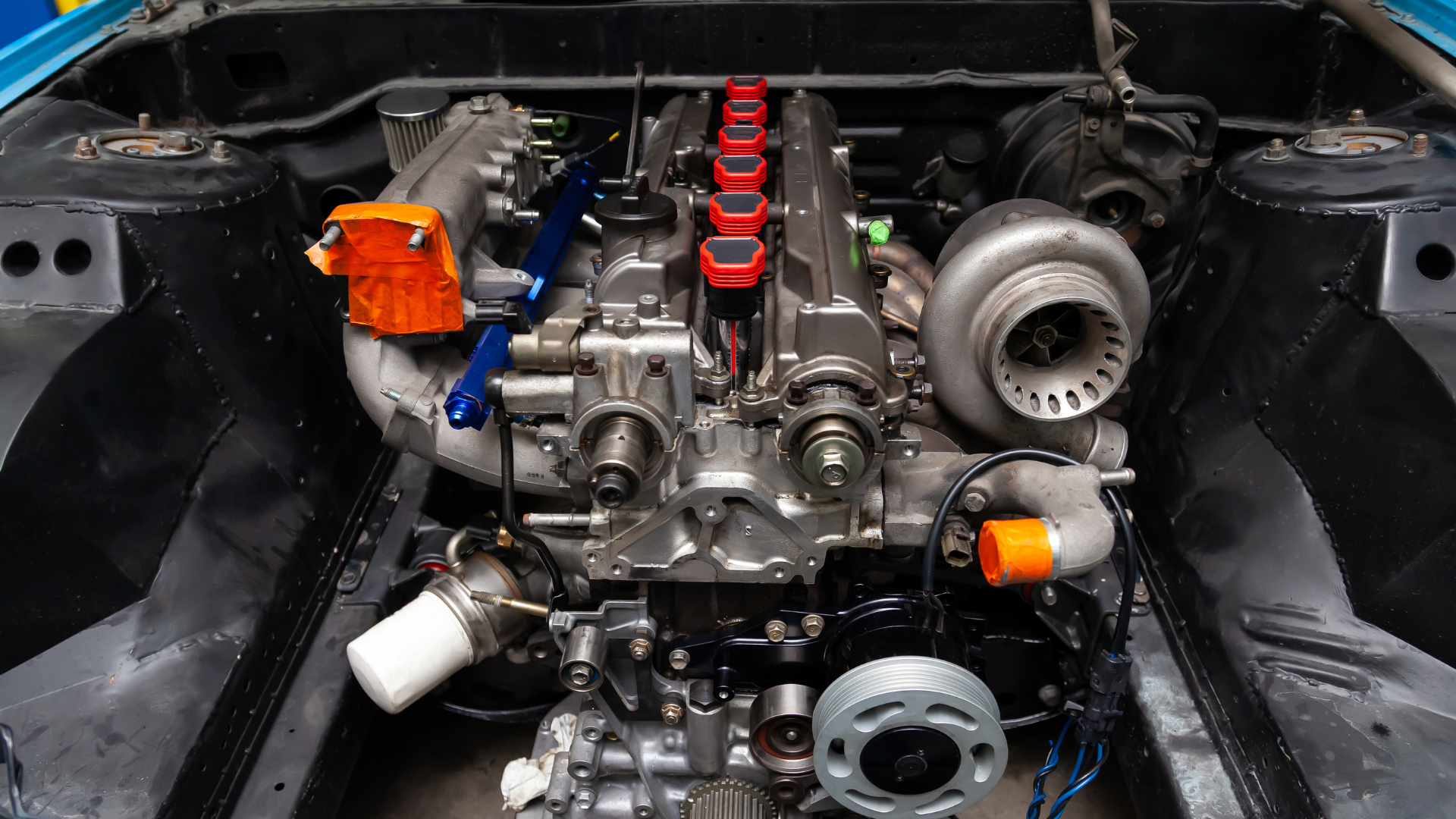
14 Aug, 2023
In the 1960s and 70s, when vehicles had distributors, carburetors and mechanical ignition, tune-ups were necessary about every 35,000 miles or so. Those days are long gone, and today’s vehicles are more low-maintenance than ever when it comes to tune-ups. So what does a “tune-up” even involve today? First off, consider that on modern vehicles, spark plugs only need to be replaced at about the 100,000 mile mark. It’s really not necessary to replace them before that point; on many vehicles, changing plugs is a difficult job that can equate to many hours of labor. Since today’s vehicles use processors to govern fuel metering, ignition timing, transmission shift points, emissions and other variables, our starting point for any performance issue is to connect a code reader and troubleshoot what’s going on by obtaining the trouble codes stored in the engine computer. The codes give us the information we need to look at the problem from different angles and determine what caused the code to register in the first place and make the right calls on what to repair or replace. Your dashboard Check Engine light is designed to light up when a trouble code is stored in the computer, but sometimes “pending” codes can be stored without lighting up that indicator. Other items on a tune-up today might include: --Replacing the air filter --Replacing the fuel filter(s) --Checking belts and hoses --Replacing the coil-on-plug packs that supply voltage to the spark plugs --Checking the battery, cables, terminals and charging system --Checking or replacing the engine’s oxygen sensor(s) --Checking the exhaust and emissions system While we’re under the hood, we’ll perform a thorough inspection for wear and tear on other parts of the vehicle. This is the kind of preventive maintenance that can head off problems before they worsen. At Auto Express of Sacramento, you can count on a thorough and accurate tune-up and straight talk about whatever issues your vehicle might have, with no jargon or shop talk. It’s the way we do things at Auto Express of Sacramento – honest and straightforward, every time. It’s the kind of personalized and honest service that our loyal customers in the Sacramento area have come to expect from us. Got concerns about your vehicle’s performance? Make an appointment with us today.
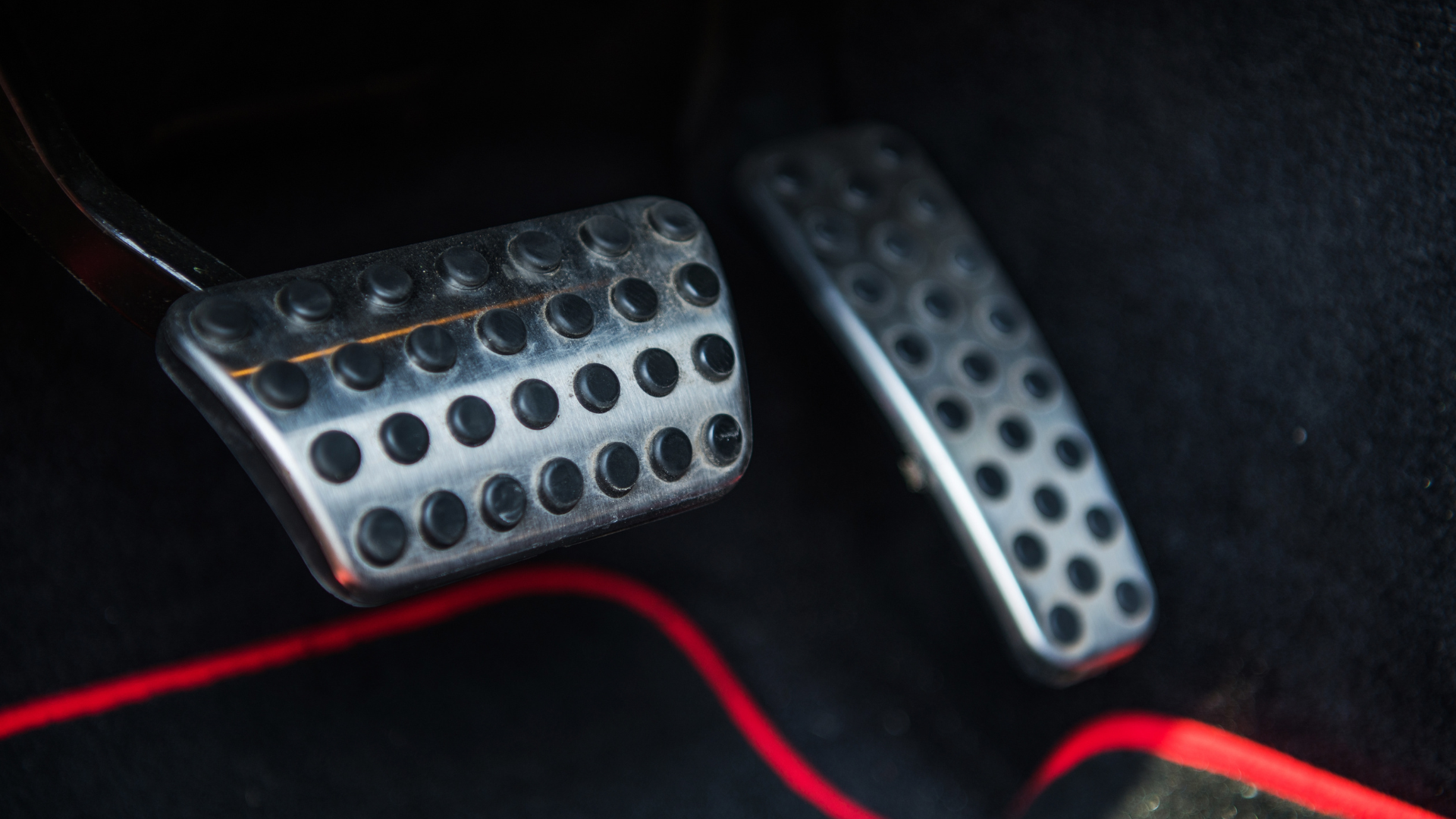
14 Aug, 2023
So lately you’ve noticed that your brakes “feel” different and are making some noises. In many cases, you may hear a clicking noise that increases with speed, a squealing or groaning noise or a metal-to-metal grinding sound. These aren’t the only signs, however, that your brakes might need service. In fact, with the hard ceramic or semimetallic material of newer brake pads, a certain amount of noise isn’t unusual. Other symptoms can include: -Steering wheel pulls to one side while braking -Shake or pulsation through pedal or steering wheel while braking -Excessive brake pedal travel -Brake pedal feels “soft” or “spongy” underfoot -Longer stopping distances These are all signs that shouldn’t be ignored, and should be serviced by professionals soon! We’ll start with a test drive, then pull off the wheels and have a closer look at the problem. In most cases, it’s worn brake pads that are at fault. Brake pads can last 40-60,000 miles and it can be hard to notice when brake pads have worn to a point where they need service. One thing is for certain, though – a metal-to-metal grinding noise is bad news. It means that either your brakes have worn to the point where the wear indicators are dragging on the rotors, or the pads have worn down to their metal backing plates. Not all brake pads are created equal. Cheaper pads simply will not wear and last as long as good-quality pads. At Auto Express of Sacramento, we use the same pads you’ll find on police cars, ambulances and other vehicles where brake performance is crucial, and that’s what you can depend on with us. Note that pads aren’t always the problem. Sometimes there can be issues with the brake calipers, the rotors, vacuum problems or brake lines. That’s why it’s so important that your brakes be serviced by trained and certified professionals. Brake problems? Make an appointment with us today!
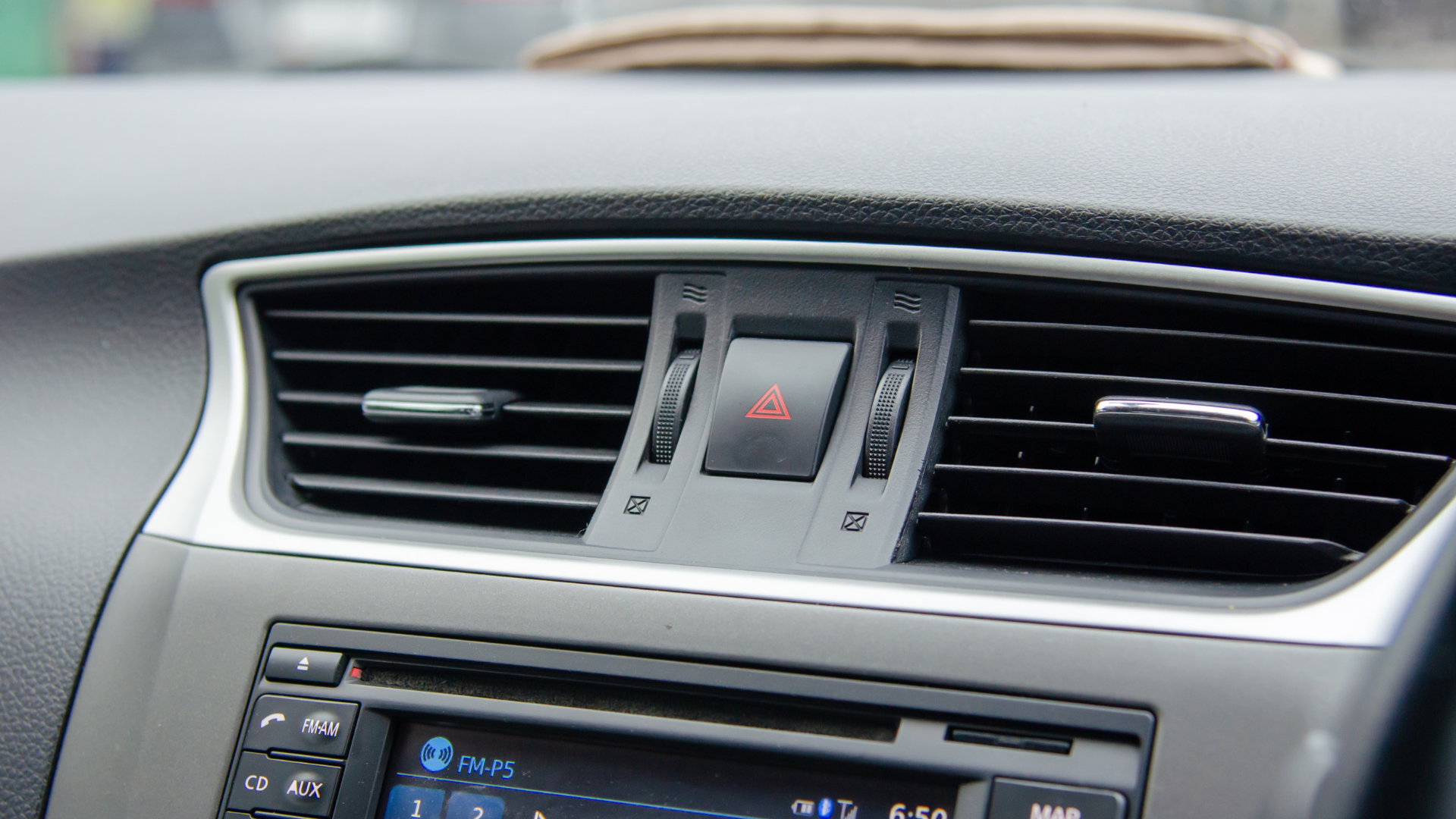
14 Aug, 2023
You turn on your A/C and it seems like it's blowing air that's barely cooler than the hot air outside. Or, it blows cool-ish air while you're moving, only to have it blow warm air again when you come to a stop. Why is this happening? There can be several reasons this happens. People tend to think that low refrigerant level is the be-all and end-all for this problem, and usually that's correct. It's normal for the system to lose about five percent of its Freon over a year's time, making an a/c recharge a regular part of spring maintenance. If it's losing Freon quickly, though, it has to be escaping from somewhere. We recommend have the system checked for mechanical problems or leaks. Leaks can occur at the compressor, seals, lines, the condenser, evaporator or really anywhere in the A/C's closed-loop system. Overpressurizing the system by adding too much Freon can lead to more problems, causing tiny O rings to leak or causing other parts to fail. Buying unnecessary parts or over adding Freon can be costly, which is why it's important to be certain where the problem lies before going any farther. At Auto Express of Sacramento, CA, we use the Bacharach detection system which can detect the tiniest of pin holes and drops in system pressure. While refrigerant contains a fluorescent dye which helps detect leaks, the Bacharach system has a higher degree of accuracy and can quickly help pin down problems. This will tell us if everything is in working order or needs attention. It's important to remember that Freon refrigerant also contains a light oil which keeps the compressor lubricated. If you continually run the system with an insufficient amount of Freon, it can destroy the compressor by depriving it of lubrication -- and in some cases, the compressor can come apart and send fragments of metal through the rest of the system, effectively causing much bigger problems. At Auto Express of Sacramento, we're certified and experienced in A/C service and repair, and we back all our work with a guarantee. Don't suffer through the hot months in a stuffy car -- make an appointment with us today!
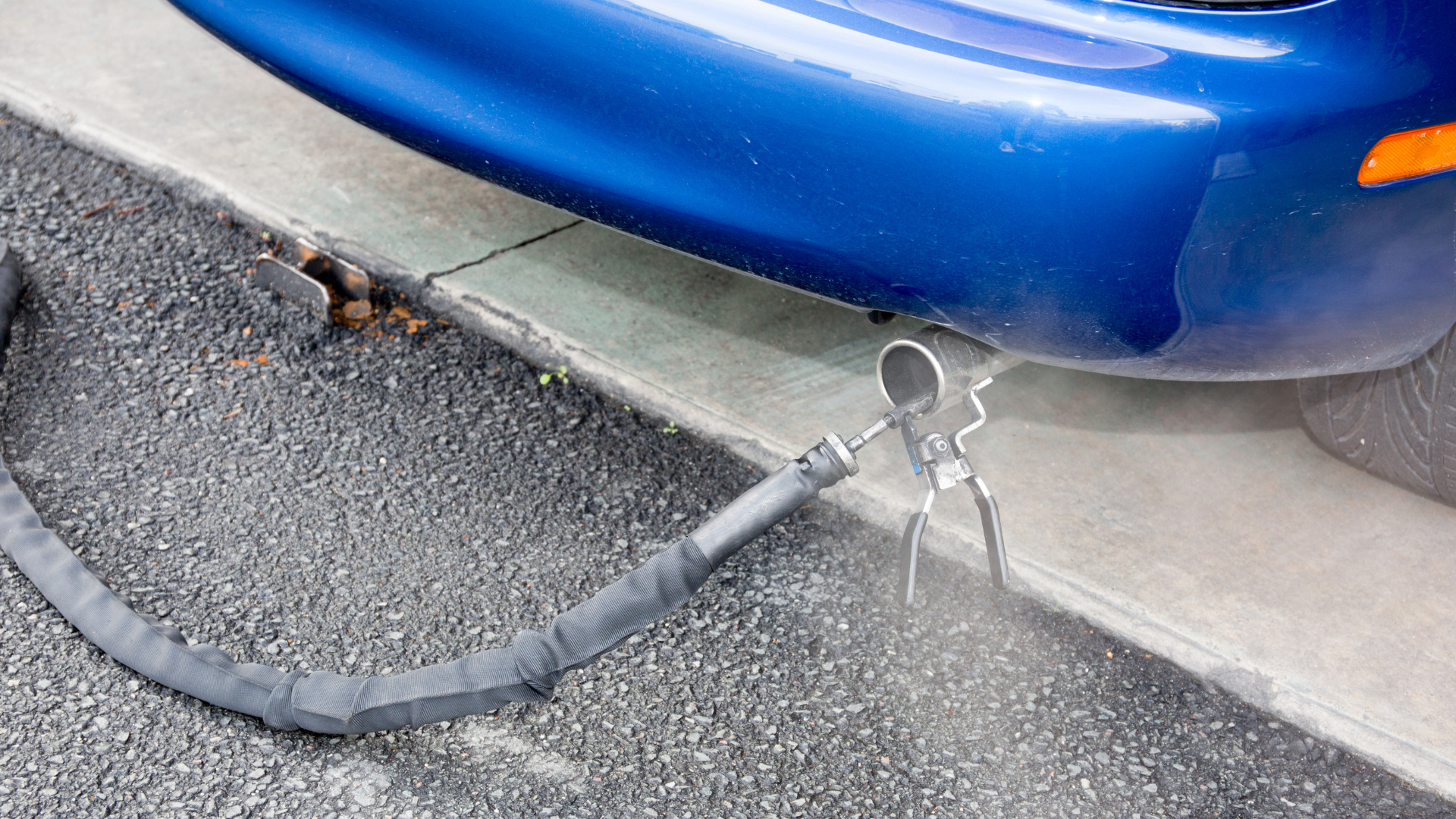
14 Aug, 2023
It's common knowledge that California emissions standards for vehicles are pretty strict. These are a few of the questions we hear regularly at Auto Express Sacramento: Does every vehicle have to have a smog test? Yes, every vehicle registered in the state of California is required to have a state-authorized smog test. This is emissions testing, and all vehicles must comply. All vehicles are required to have a state mandated smog test. This is emission related and must be in compliance to operate on the highway. Does my Check Engine light have something to do with a smog test? Part of the engine control computer's job is to regulate engine emissions, and it illuminates the Check Engine light if there's a problem. If the Check Engine light comes on and goes off again intermittently, or even if you reset the computer and the light comes back on, there could be an emission problem. Smog testing involves scanning your vehicle's computer for trouble codes, for a true depiction of what is going on inside your vehicle's engine. Even if you have the Check Engine light reset, the computer will still indicate a problem.. You can’t fool the system, which is why it should be maintained by a professional. What's involved in a smog test? During a Smog test the vehicle is tested for compliance; if tailpipe readings and the computer show no problems, your vehicle passes. If the vehicle fails, then the problem must be corrected and inspected again. The vehicle is non-compliant until it passes. What do I do if I fail a Smog test? If you the vehicle fails a smog test, we need to track down the problem that caused the failure and address it in order to become compliant. If the vehicle was tested at our facility, we will diagnose the problem and determine what's needed to correct it. If the vehicle was tested elsewhere, we will look to see why it was failed and take care of the problem. An inspection will be done to ensure no other issues are going on at the same time. Often a vehicle may code or fail emissions, but the actual problem might be more complex. For instance, the computer might indicate a bad O2 sensor; however, the problem could be a broken wire or something more. The code just gives us a place to start and we go from there. Smog testing facilities must have a license to test, however, the state mandates a special, separate license to perform the repair work. We are ASE certified with a specialty in emissions-related issues. At Auto Express Sacramento we have been repairing emission for over 26 years in the same location. All work is backed by our guarantee. Diagnostic price on the site. Let us make smog testing and compliance easy for you. We will walk you through every step to keep you on the road longer. Check Engine light on? Emissions test coming up? Make an appointment with us!
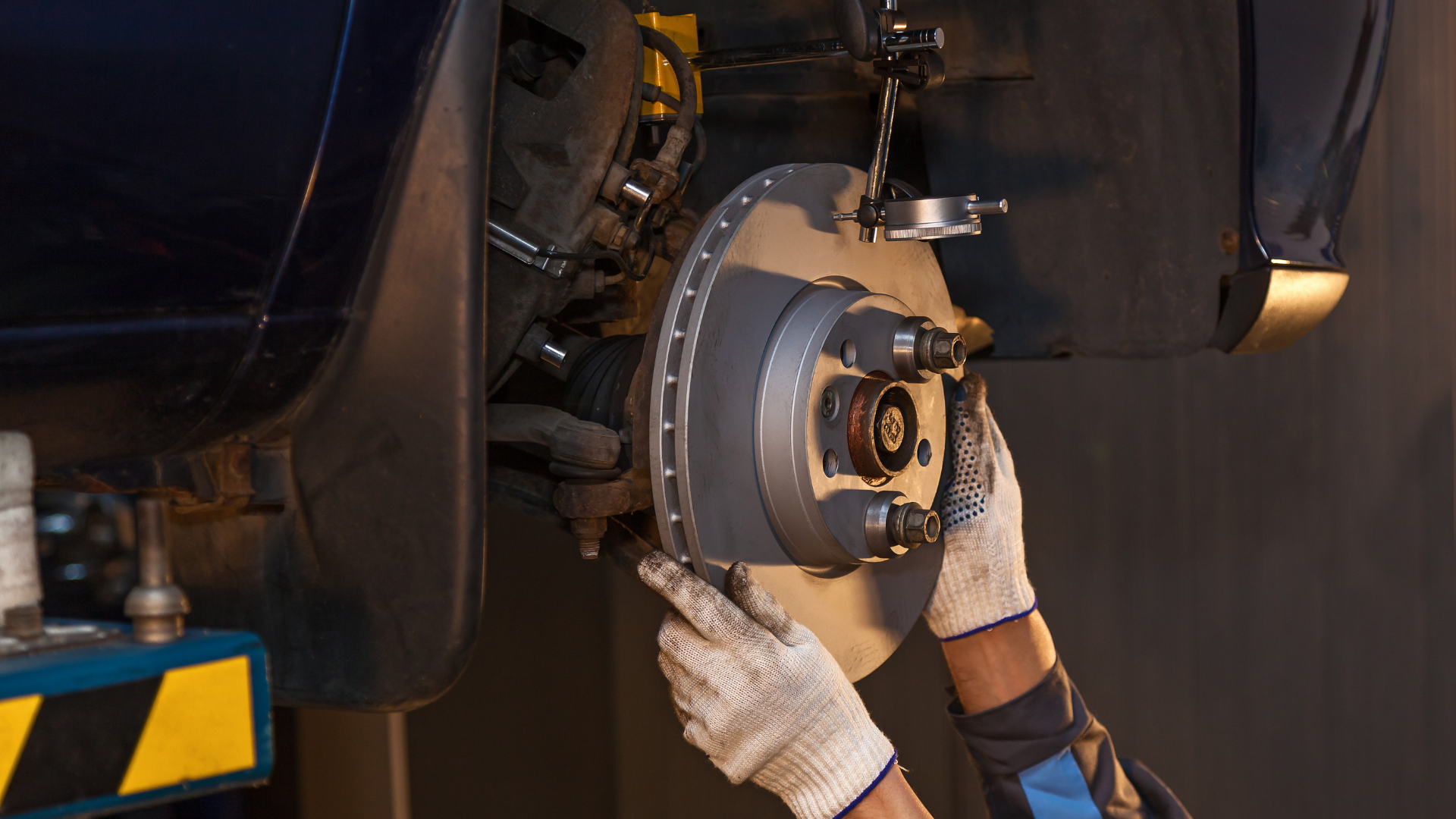
14 Aug, 2023
Now, really…have you ever known anything that just got better on its own, with you doing nothing about it? Probably not! Your car’s brakes work something like the handbrakes on a bicycle. When you press the brake pedal, a piston moves inside the master cylinder reservoir, sending hydraulic pressure through the brake lines to the wheel calipers. The wheel calipers enclose the smooth steel rotors , and another piston forces two brake pads of friction material against the rotor, causing enough drag to slow and stop it. Friction material is semimetallic or ceramic and wears very slowly – brake pads typically last 40-60,000 miles. As a result, it can be hard to tell when brakes are becoming significantly worn. These are all signs you need brake replacement soon, though… Pronounced pull to one side while braking Excessive brake pedal travel Pulsation through brake pedal while braking Brake pedal slowly goes to floor while holding car at a stop, in gear Longer stopping distances Tendency for one or more wheels to lock up and skid while braking Squeal, groan or metallic grinding noise while braking Of all the above, the metallic grinding noise is the worst sign, by far, and it means that your brake repair costs are about to go up. It means that the brake pads are worn down to their steel backing plates and rivets; all the braking effect you’re getting is from metal-on-metal as the rivets dig into the smooth steel surface of the rotors. A routine brake job just got a lot more expensive, as you’re now going to have to replace the rotors…not to mention that your car is very unsafe until you get the repairs done! The moral? Don’t put off your brake service unless you are just dying to spend a lot more money on brake repair costs. We know you’ve got a lot of choices when it comes to brake repair shops, and we hope you’ll come to Auto Express for brake replacement in Sacramento. Make an appointment with us today!
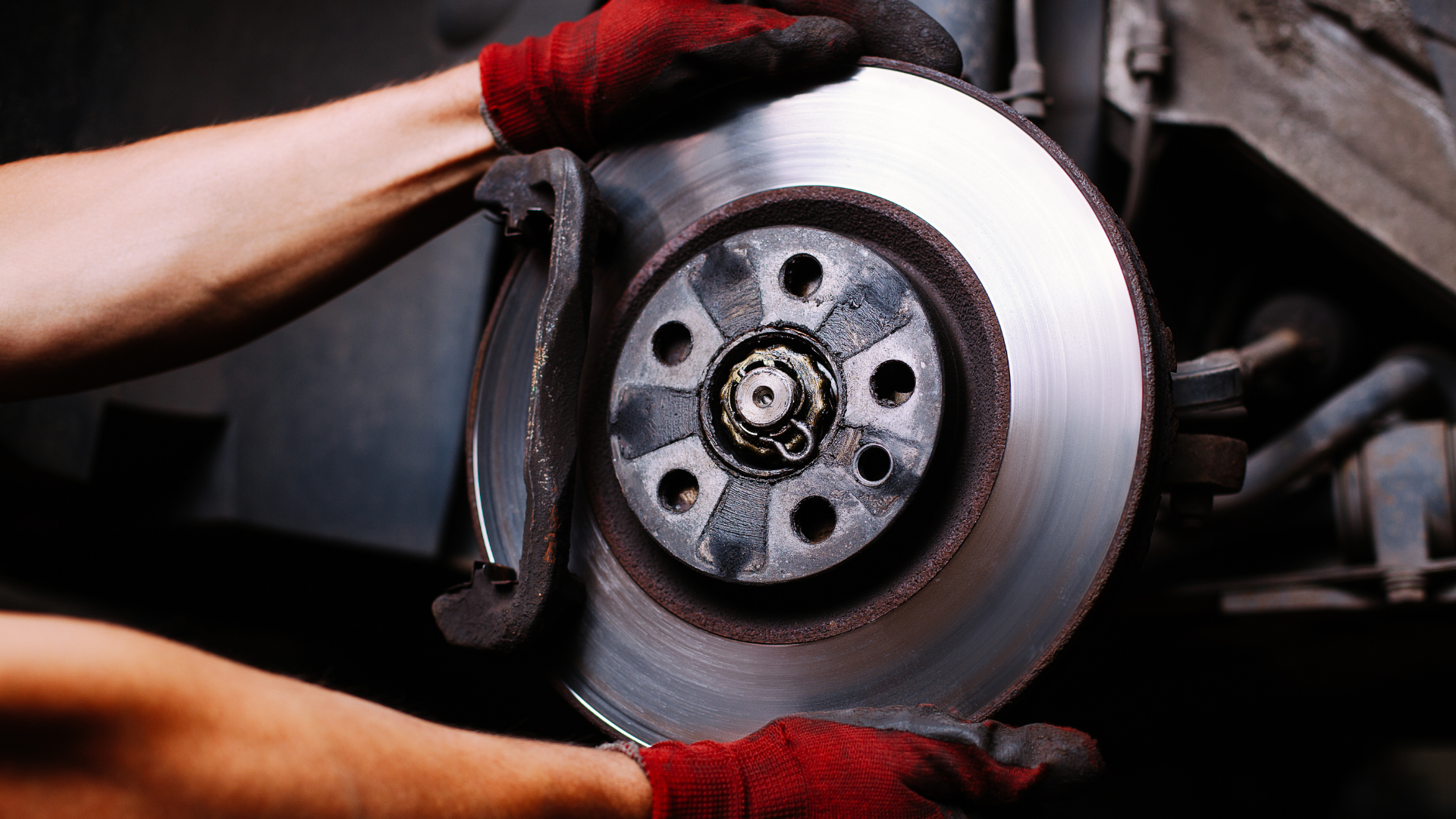
14 Aug, 2023
If you’ve got a health problem that’s troubling you – let’s say your blood pressure is consistently too high, your knee hurts like crazy or you’re having dizzy spells – chances are you’ll go see a doctor for it, right? Maybe it’s not much of anything, or maybe it’s something serious, but there’s one thing for certain – it isn’t just going to get better on its own, and it will most likely just get worse if you put it off. It’d be great if we had the same sort of diligence about keeping our vehicles maintained, but too often we just don’t. We tend to slam the hood and forget about it, and take things for granted for far too long, far too often. Brakes wear very slowly. The friction material on your brake pads can easily last 40-60,000 miles, with the right driving habits. Because they wear down so slowly, it’s easy to not notice signs of wear as they slowly develop: · Car pulls noticeably to one side while braking · Pulsating sensation through brake pedal · One or more wheels tends to lock up and skid · Longer stopping distances · Excessive brake pedal travel before brakes engage · Brake pedal slowly goes to the floor while holding the vehicle stopped and in gear · Screeching, squealing or grinding noises This is where we come to the “repair or replace” dilemma of the title. Disc brakes are comprised of smooth steel rotors, to which your wheels are bolted. A caliper encloses the rotor, and when you step on the brakes, two brake pads grip the rotor and slow the car down in much the same fashion as handbrakes on a bicycle. If you address brake problems early, it’s not a big deal…not much more than just replacing the brake pads. But if you let them go too long, the friction material of the pads will wear all the way down to the pads’ backing plates. If you hear a metal-to-metal grinding noise while braking, that means that all the braking effect you have is coming from the metal backing plates and rivets digging into the smooth steel surface of the brake rotors. At that point, your simple brake job has just about doubled in price; the rotors will be ruined and in need of replacement along with the pads. Not only is this more costly, it’s also extremely dangerous…as you’ve probably realized by now, due to the difficulty of trying to bring your vehicle to a stop. Because brake wear is so gradual, it’s important to keep tabs on it. Don’t let your brakes go more than six months without an inspection of the rotors, the pads and the entire brake system. At Auto Express of Sacramento, CA, brake repair is a big part of what we do. Our ASE-certified technicians are trained and experienced with all sorts of brake repair for just about any car, minivan, light truck, SUV or crossover on the road. Make an appointment with us today for a brake inspection and service on your vehicle. Whatever you do, though, don’t let your brakes go too long!
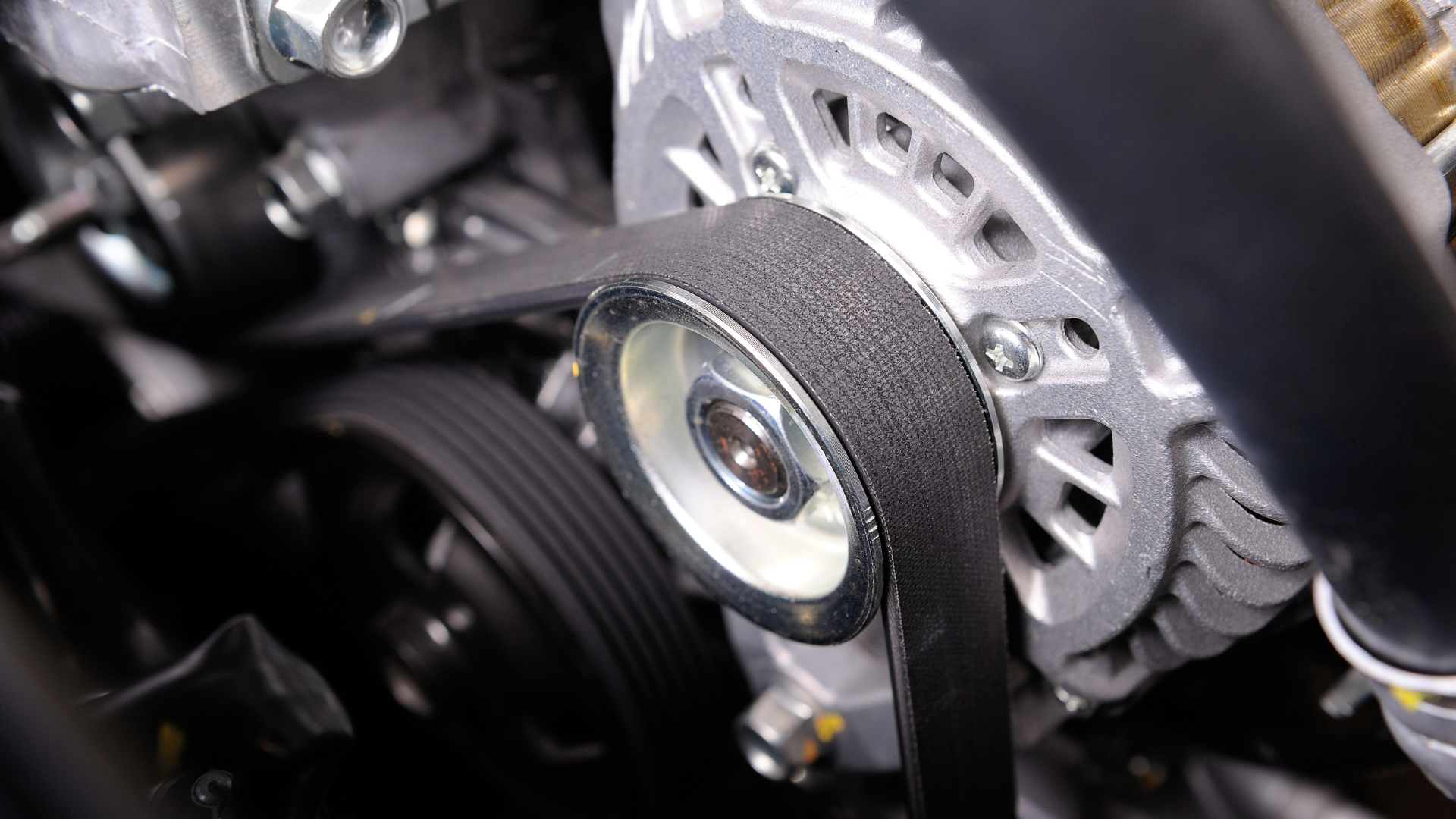
14 Aug, 2023
At Auto Express in Sacramento, CA, we occasionally run across customers who are a little confused about timing belts and what they actually do. We’d like to take a little time to clear that up… Q: Is the timing belt the same as the serpentine belt? A: In a word, no. Older vehicles had multiple belts to drive the water pump, power steering pump, air conditioning compressor and other accessories. In the 90s, the serpentine belt was introduced; the serpentine belt is a much longer belt that loops around to drive all the accessories at once. This saves parasitic drag on the engine and saves space under the hood, since the accessories and multiple belts don’t have to all be offset from each other. The timing belt, on the other hand, is concealed under the engine’s front cover and isn’t visible. Q: What does the timing belt do? A:The internal combustion engine’s bottom end consists of pistons, connecting rods and a crankshaft. The pistons are driven down when the spark plugs detonate explosions of fuel/air inside the cylinders and generate power. The upper end consists of valves that supply fuel/air and then allow the spent exhaust gases to be expelled. The valves are opened by the lobes of a camshaft and closed again by their own springs. The timing belt, then, is what connects the upper end and lower end of the engine (or, the camshaft and crank) and allows the valves to work in sync with the pistons for the four strokes of the combustion process. Older engine designs used a bicycle-style chain rather than a belt, and many still do; timing chains generally last the entire life cycle of the vehicle.. Q: Why is it so important to change the belt at the manufacturer’s specified interval? A: The timing belt, like any other elastic belt, will stretch and eventually fail over time. If the pistons and valves suddenly go out of sync with each other, that means that the pistons are traveling upward in the cylinder at a moment when exhaust or intake valves are open. The pistons’ crowns will crash into the opened valves, bending them, punching holes in the pistons, bending the pistons’ connecting rods and generally wrecking the engine’s internals. Some engines are “non-interference” engines, specifically designed to prevent this from happening, but many aren’t. That’s why if the manufacturer says to change the engine at 60,000 miles, every mile past that is borrowed time. Q: How involved is it to change the timing belt? A: It’s a fairly big job. It requires removing accessories, often removing the radiator, cooling fan and hoses, and the engine’s front timing cover. On about 60 percent of engines, the water pump is also driven by the timing belt. Many technicians will advise replacing the water pump as well at that time, since everything’s already disassembled. It’s also advisable to replace the belt’s pulleys and tensioner at the same time; the tensioner, in particular, can wear out and seize, causing the timing belt to jump from its pulleys and causing major engine damage. Q: Is there a way to check for wear on the timing belt? A: Not really. “Inspecting” the belt will usually mean disassembly, at which point you may as well just go ahead and replace it. Sometimes you might hear a rattle or squeak from the front end of the engine, but more often than not the belt will just fail without warning. A car that has a broken timing belt will just make a steady “whirrrrrr” when it cranks, rather than the usual rhythm of an engine that’s trying to start. We hope this clears up any questions you might have about timing belts and their purpose. Check your owner’s manual for manufacturer’s recommendations on timing belt service intervals, then check your odometer. If you’re coming up on the recommended mileage for a timing belt change, don’t put it off this important auto maintenance detail. Give us a call at Auto Express Sacramento and make an appointment!
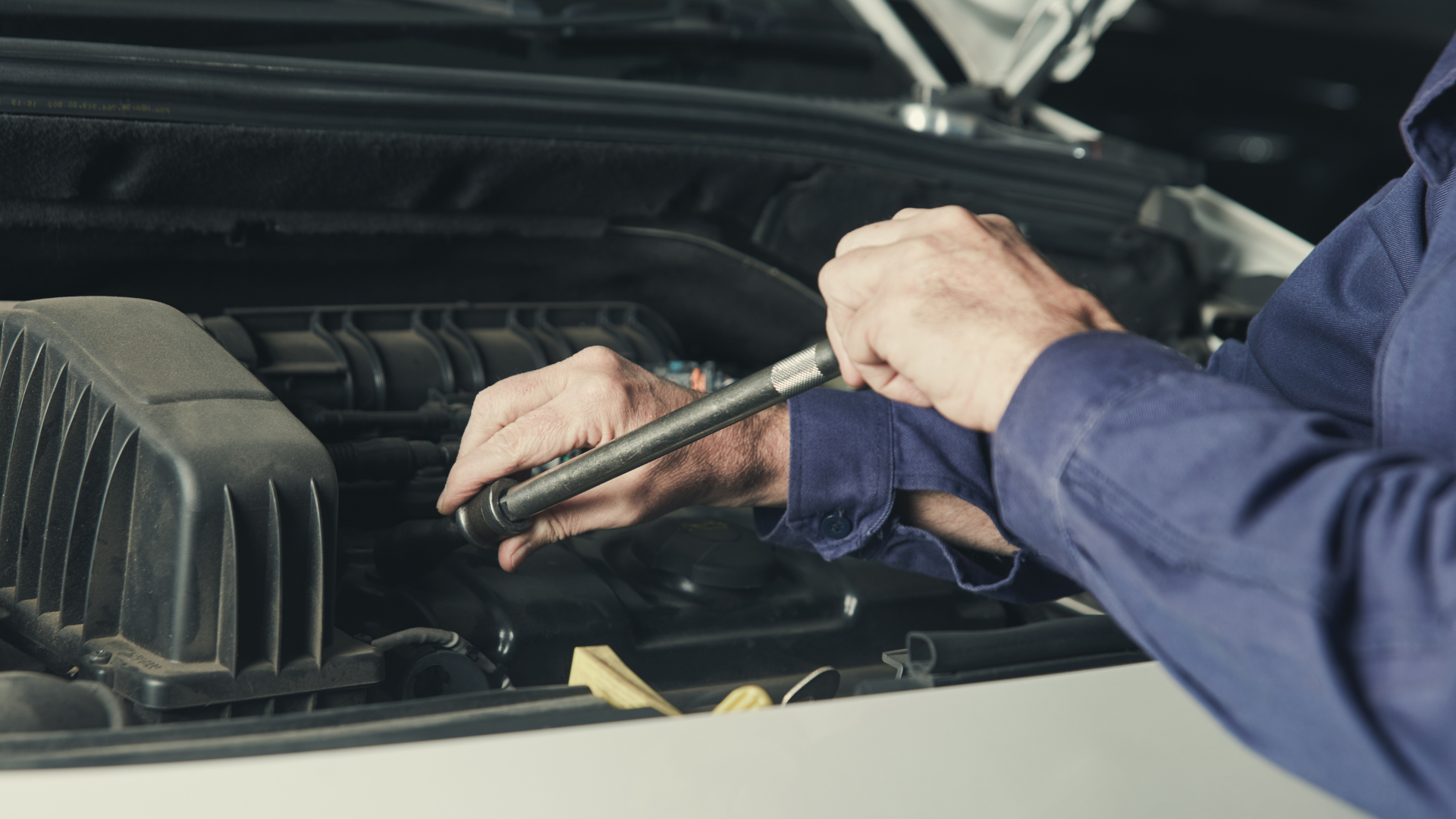
14 Aug, 2023
At Auto Express in Sacramento, CA, we sometimes see customers who have questions about tune-ups. Today, we’re hoping to clear up a few of them: Q: How often does a tune-up need to be performed? A: Not nearly as often as they did 30 or 40 years ago. In the 60s and 70s, a tune-up involved cleaning the carburetor, setting the idle speed and mixture and possibly rebuilding the carburetor’s internal parts. It was also common to change the spark plugs, replace the plug wires, distributor cap, breaker points and rotor and reset the distributor’s dwell settings. Today, distributors, plug wires, mechanical ignition and carburetors are all things of the past! Q: So what does a tune-up involve today, then? A: A typical tune-up today might include replacing the spark plugs, air filter, fuel filter and cabin air filter. The distributor and plug wires of a generation ago have now been replaced with coil-on-plug packs that deliver spark directly to each plug; sometimes these coil packs will fail and need to be replaced. A technician will hook up a code reader to the engine computer’s diagnostic connector to check for trouble codes. Other than that, the tune-up today might also include a check of all the engine and drivetrain fluids and a thorough examination of hoses and belts. Q: Is the timing belt part of a tune-up? A: No, but the timing belt should be replaced at the manufacturer’s recommended interval. The timing belt coordinates the opening and closing of valves with the rotation of the crankshaft. On many engines, a broken timing belt can mean that the valves and pistons go out of sync with each other; the pistons travel upward in the cylinder and smash into opened valves, effectively ruining the engine. Note also that, rather than a belt, many vehicles still use a timing chain, which is good for the lifetime of the engine. Q: So how often does a tune-up need to be done today? A: Today’s engines are much less maintenance-intensive than cars of a generation ago. The 30,000 mile tune-up of the 60s is now only needed at about every 80,000 or even 100,000 miles. Spark plugs in particular have a much longer service life than they once did. If you’re noticing problems like lack of power, rough running, an illuminated Check Engine light, rough idle, a tendency to stumble or stall or a drop in fuel economy, it might be time for a tune-up on your vehicle. Don’t just put up with drivability problems like those -- give us a call at Auto Express in Sacramento, CA, make an appointment and let our techs perform a tune-up on your car!

14 Aug, 2023
At Auto Express of Sacramento, CA, we occasionally see customers who have some questions about their brakes. We’d like to take a moment to clear up a few common questions and misconceptions about brake systems and brake performance: Q: My brakes are noisy. Does that mean they need to be replaced? A: Well, not necessarily. Brake noise isn’t uncommon, especially when braking hard or as the vehicle is almost coming to a stop. Some brands of brake pads and brake pad materials are more prone to noisy braking as the pads vibrate against the brake rotor. Most vehicles are designed with an anti-rattle clip on the backing of the brake pads; this clip should be replaced along with the pads, as it’s prone to metal fatigue. There are also special greases and compounds that can be applied to the backing plate of the pads to reduce noise. Often the noise will subside as the brakes begin to wear and break in. The sound you need to be worried about, however, is a metallic grinding or high-pitched squeal that could indicate seriously worn brakes. Many brake pads feature a spring-steel wear indicator that protrudes from the backing plate and is designed to rub on the rotor when the brake pads reach a certain minimum thickness. Q: I sometimes hear a buzz when I apply the brakes and feel a slight vibration through the brake pedal. Is that something to worry about? A: What you are experiencing could be your ABS system activating. Antilock brakes (ABS) use a system of sensors on each wheel, monitoring the wheel’s rotational speed. The sensors then inform a central processor that distributes braking effort to each wheel via a system of valves and pumps. If a sensor notes that one wheel is slowing down more and is in danger of locking up during a hard stop, the ABS system lessens braking effort to that wheel. Chances are the buzzing noise and sensation through the brake pedal are the result of the ABS pump at work. Q: What are some signs of brake problems? A: At least this is an easy question! These are all signs of worn brakes that will soon need to be replaced: · Pulsating sensation through brake pedal, indicating a warped rotor · Vehicle pulls to one side while braking · Increased stopping distances · Increased brake pedal travel before brakes engage · Loud squeal, scraping or metallic grinding noise while braking If you’re experiencing any of these, you’ll need to get your brakes serviced soon. If left too long, your brake pads will wear all the way down to their backing plates and rivets, which will soon cut grooves into the brake rotors. This is not only very dangerous, but it will soon cost you a lot more money for brake repair. At Auto Express in Sacramento, CA, our automotive techs are trained and experienced in all aspects of brake repair. If you’re noticing that your brakes aren’t performing as well as they used to, don’t delay – call us and make an appointment before your brake repair gets a lot more expensive.
Contact
We’d love to hear from you. Choose the most convenient method, and we’ll get back to you as soon as we can.
Contact Us
Thank you for contacting us.
We will get back to you as soon as possible.
We will get back to you as soon as possible.
Oops, there was an error sending your message.
Please try again later.
Please try again later.
We Service Cities Within a 15-mile Radius of Sacramento
Auto Repair Shop
Business Hours:
Monday-Friday:
7:00 AM - 5:30 pm
Saturday-Sunday:
Closed
